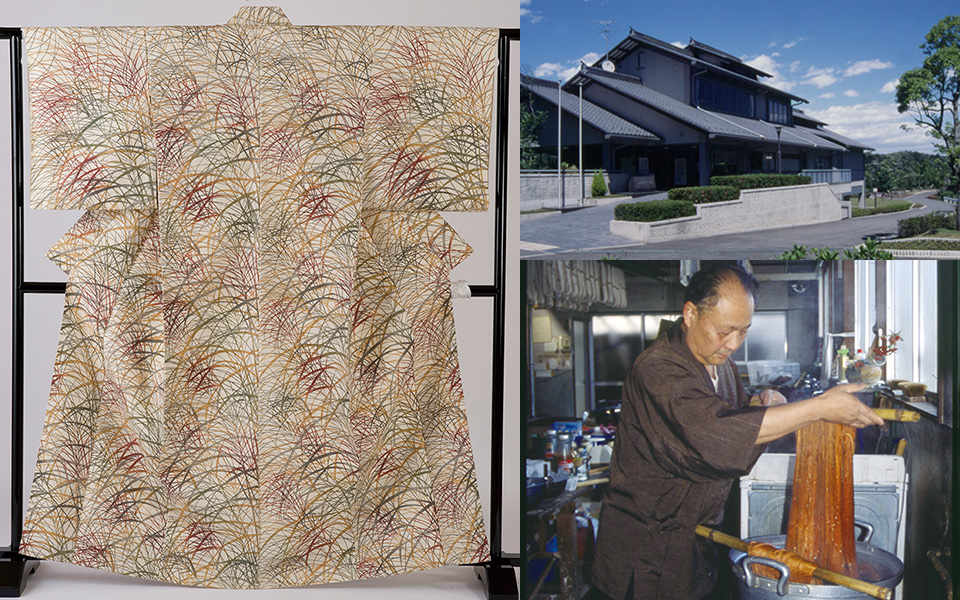
Kusaki-zome Natural Dyeing Techniques
草木染
The Development of Kusaki-zome in Takasaki The Legacy of Seiju Yamazaki
Seiju Yamazaki (1923-2010) devoted his life to textile dyeing using natural dyes derived from plants and grasses (kusaki-zome) to such an extent that he referred to himself as the “man possessed by color”. Together with his father Akira, the novelist and father of kusaki-zome, Seiju established a research center for natural dyeing in Saku, Nagano Prefecture. At age 33 he moved to Takasaki, a city with a long tradition of textile dyeing, where he spent his time experimenting with the plants he found in the city’s natural surrounds and open spaces, contributing greatly to the development of kusaki- zome techniques. Seiju Yamazaki meticulously searched for natural colors. He recreated the ancient colors he had seen stored in the Shosoin Repository, traveled to tropical countries in pursuit of dye plants, and changed established ways of thinking in regard to fresh- leaf green dyes. Yamazaki was instrumental in the founding of the Takasaki City Dye Plant Botanical Garden, helping to select plants, hand-dyeing himself the textiles for display, and giving lectures on kusaki-zome within the facility. His decision not to apply for an extension on the registered trademark “Kusaki” that was first registered in 1932 was due to his desire for “those who love kusaki- zome to be able to freely use the technique”, and thus Yamazaki’s legacy lives on through today’s artists and devotees who are able to continue to freely use the name.
